What You Should Know About Peak Hour Traffic
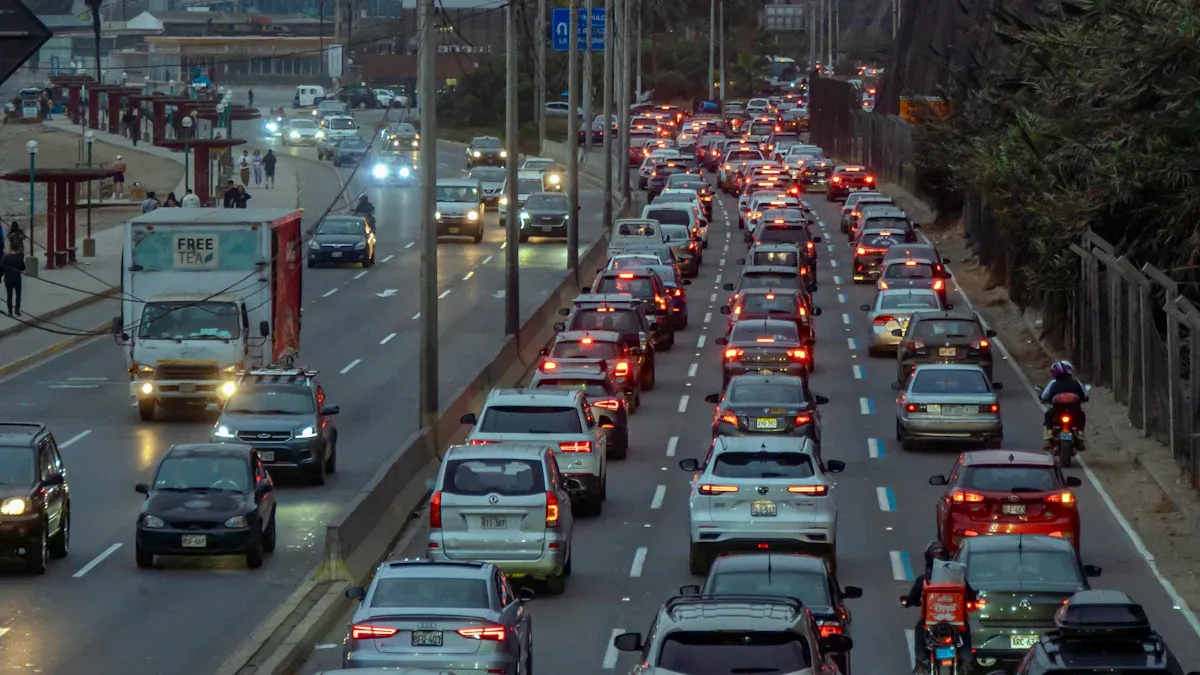
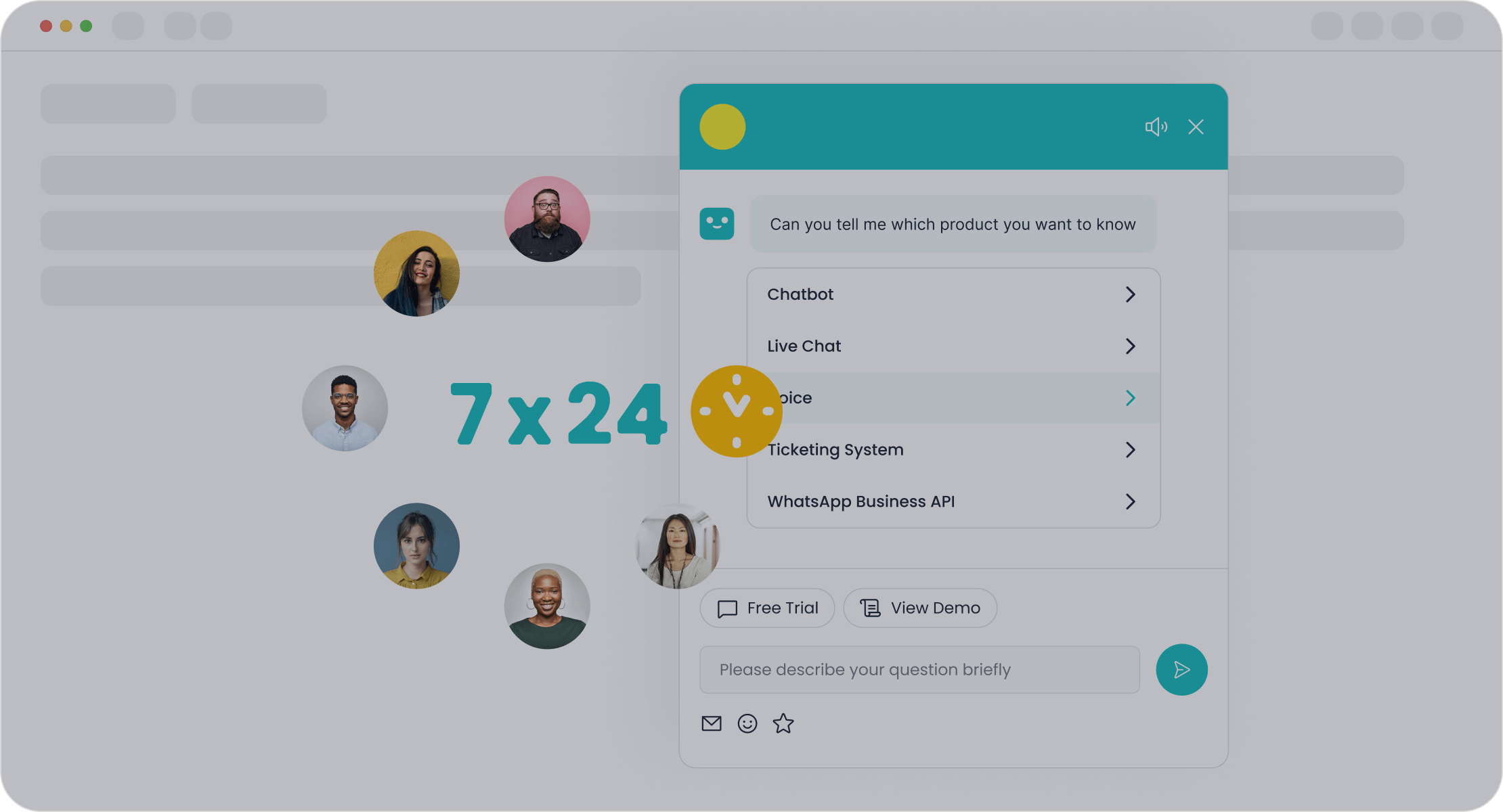
Peak hour traffic (pht) refers to the periods during the day when roads experience the highest vehicle volumes. These typically occur in the morning and evening as people commute to work or school. For instance, morning peaks from 6 am to 9 am account for 62.54% of daily traffic, with an average flow of 40,956 vehicles. In contrast, off-peak hours, such as mid-morning or late evening, see reduced congestion, offering smoother travel. Understanding these patterns helps you plan your commute efficiently, saving time and reducing stress. Tools like Sobot’s AI Chatbot can even assist businesses in managing customer interactions during these busy hours, ensuring seamless service.
Understanding Peak Hour Traffic (PHT)
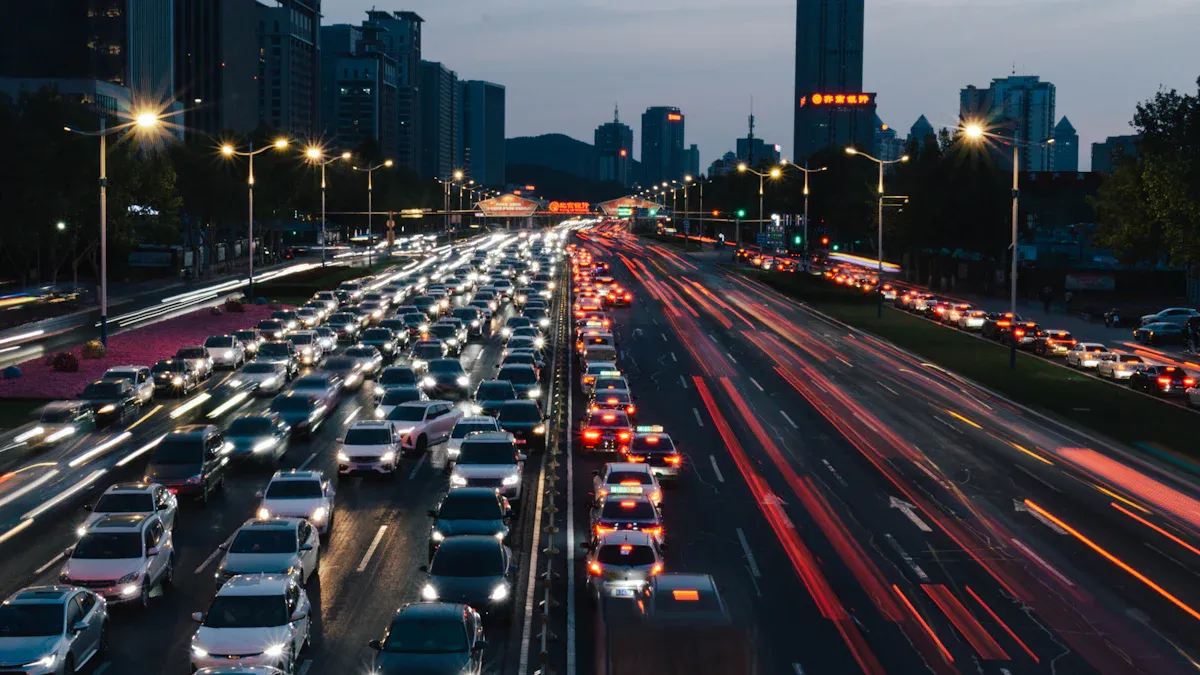
What Are Peak Hours?
Typical Timeframes for Peak Hours
Peak hours refer to the busiest times on the roads when traffic volume reaches its highest levels. These typically occur during the morning and evening rush hours. Morning peak hours often range from 6:00 AM to 9:00 AM, while evening peaks usually fall between 4:00 PM and 7:00 PM. Research shows that the average morning peak hour flow ratio can range from 0.0646 to 0.1510, with evening ratios spanning from 0.0605 to 0.2131. Cities with higher population densities tend to experience longer peak hour durations. For example, urban areas with significant commuter populations may see extended congestion periods compared to smaller towns.
Common Causes of Peak Hour Congestion
Several factors contribute to peak hour traffic congestion. The most common include the simultaneous movement of commuters heading to work or school. Limited road capacity exacerbates the issue, especially in areas with outdated infrastructure. Events like accidents or road construction can further disrupt traffic flow. Additionally, reliance on personal vehicles increases congestion, particularly in cities with limited public transportation options. Solutions like carpooling, flexible work hours, and congestion pricing have proven effective in reducing peak hour traffic. For instance, adjusting school start times can spread traffic loads more evenly, creating safer and smoother travel conditions.
What Are Off-Peak Hours?
Timeframes for Off-Peak Hours
Off-peak hours occur during periods of reduced traffic activity, typically outside the morning and evening rush hours. These include mid-morning, early afternoon, and late evening. For example, traffic volumes between 10:00 AM and 3:00 PM are significantly lower compared to peak hours. Off-peak hours provide an opportunity for smoother travel, especially for leisure trips or errands.
Characteristics of Off-Peak Traffic
During off-peak hours, roads experience lighter traffic volumes, leading to faster travel speeds and reduced stress for drivers. You’ll notice fewer delays and a lower risk of accidents compared to peak hours. Off-peak travel also benefits the environment by reducing fuel consumption and emissions. Businesses can leverage tools like Sobot’s AI Chatbot to manage customer interactions efficiently during these quieter periods, ensuring uninterrupted service and improved satisfaction.
Key Differences Between Peak and Off-Peak Hours
Congestion Levels
Traffic Volume and Travel Speeds
During peak hours, roads experience heavy traffic, with vehicles moving at slower speeds. For example, in Shenyang, China, morning peak hours account for 62.54% of daily traffic, with a flow ratio of 3.18:1 compared to the evening peak. In urban areas like Los Angeles, congestion rates during peak hours reach 23%, significantly impacting travel speeds. The table below highlights the difference in median speeds:
| Congestion Level | Median Speed (mph) |
|---|---|
| Less-crowded zones | 45 |
| High-density urban centers | 25 |
Off-peak hours, on the other hand, offer smoother travel. Roads are less crowded, allowing you to reach your destination faster and with less stress.
Impact on Commuting Experience
Heavy traffic during peak hours can make commuting frustrating. You may face delays, increased fuel consumption, and higher stress levels. In contrast, off-peak travel provides a more relaxed experience. With fewer vehicles on the road, you can enjoy shorter travel times and reduced risks of accidents.
Timeframes and Patterns
Morning and Evening Rush Hours
Morning and evening rush hours define peak traffic periods. Typically, morning rush hours occur between 6:00 AM and 9:00 AM, while evening rush hours span from 4:00 PM to 7:00 PM. Studies show that morning rush hours often see higher traffic volumes and increased crash risks compared to evenings. For instance, morning peaks account for 62.54% of daily traffic, with maximum flow occurring during this time.
| Evidence Type | Description |
|---|---|
| Morning Rush Hour | Higher traffic volumes and crash risks. |
| Peak Traffic Flow | Median rush hour: 6–9 AM and 3–7 PM. |
Variations by Location and Day
Traffic patterns vary by location and day of the week. Urban centers with dense populations experience longer peak hours compared to smaller towns. Additionally, weekdays like Monday and Friday often see higher congestion levels. The table below illustrates these variations:
| Day | Morning Peak (6am-9am) | Off-Peak (9am-12noon) | Evening Peak (4pm-7pm) |
|---|---|---|---|
| Monday | β=0.20, t=97.29, p<0.001 | β=0.13, t=88.95, p<0.001 | β=0.21, t=135.35, p<0.001 |
| Friday | β=0.21, t=93.78, p<0.001 | β=0.13, t=70.00, p<0.001 | β=0.24, t=137.60, p<0.001 |
Effects on Daily Activities
Commuting to Work or School
Peak hours significantly impact your daily commute. Heavy traffic during these busy periods can lead to longer travel times and missed appointments. Studies show that work-related travel constitutes about 20% of all trips, with 50% of trips during rush hours being work-related. Flexible schedules or carpooling can help reduce congestion and improve your commuting experience.
Leisure and Errand Travel
Leisure travel often occurs during off-peak hours, offering a smoother experience. Morning peak traffic flow averages 40,956 vehicles, while evening peaks average 33,989 vehicles. This indicates that flexible post-work travel reduces congestion. Additionally, leisure travel is increasing, reflecting a shift in travel behavior. By planning errands during off-peak hours, you can save time and avoid the stress of heavy traffic.
Challenges of Peak Hour Traffic
Stress and Mental Fatigue
Effects on Mood and Productivity
Peak hour traffic can take a toll on your mental well-being. Sitting in long lines of vehicles often leads to frustration and irritability. Studies show that prolonged exposure to traffic congestion can lower your mood and reduce productivity. For instance, the constant stop-and-go driving during electricity peak hours can leave you feeling drained before you even start your day. This mental fatigue impacts your ability to focus, making it harder to perform tasks efficiently once you reach your destination.
Long-Term Health Implications
The stress caused by peak hour traffic doesn’t just affect your mood—it can also harm your health. Research links chronic exposure to traffic congestion with increased risks of high blood pressure and heart disease. The repetitive strain of navigating through crowded roads during electricity peak hours can elevate cortisol levels, which may lead to long-term health issues. Practicing safe driving habits and planning your commute wisely can help mitigate these risks.
Delays and Lost Time
Increased Travel Times
Traffic congestion during peak hours significantly increases travel times. A study by Loudon et al. highlights the importance of analyzing peak period travel to improve transportation planning. The table below summarizes findings from various methodologies:
| Study | Methodology | Findings |
|---|---|---|
| Loudon et al. | Regression model | Emphasized the need for peak period travel studies for better planning. |
| Ben-Akiva et al. | Dynamic Markovian model | Conducted simulations but did not analyze contributing factors. |
| Yan et al. | Complex network analysis | Investigated traffic flow patterns without addressing congestion causes. |
Missed Appointments or Deadlines
Delays during peak hours often result in missed appointments and deadlines. Downs Law explains that traffic congestion rises to meet maximum road capacity, especially during rush hours. Studies also reveal that 51% of crashes occur during these periods, further compounding delays. For example, higher call volume during peak hours can disrupt schedules, making it harder to stay on track. Planning ahead and using tools like Sobot’s AI Chatbot can help you manage time more effectively.
Safety Concerns
Higher Risk of Accidents
Peak hour traffic poses significant safety risks. Data shows that fatal crash injuries are more common during rush hours, with morning and afternoon periods exhibiting different causes. The table below illustrates these patterns:
| Evidence Type | Description |
|---|---|
| Rush Hour Period | Morning and afternoon peaks show varying traffic densities across regions. |
| Traffic Behavior | Increased texting in the afternoon and speeding in the morning contribute to accidents. |
| Crash Patterns | Fatal injuries differ between morning and afternoon rush hours. |
Aggressive Driving Behaviors
Aggressive driving behaviors, such as tailgating and frequent lane changes, are more prevalent during peak hours. Approximately 6.5% of aggressive driving-related crashes occur in the morning, while 8.5% happen in the afternoon. These behaviors not only increase accident risks but also create a stressful environment for other drivers. Practicing safe driving and staying calm can help you navigate these challenges more effectively.
Strategies to Manage or Avoid Peak Hour Traffic
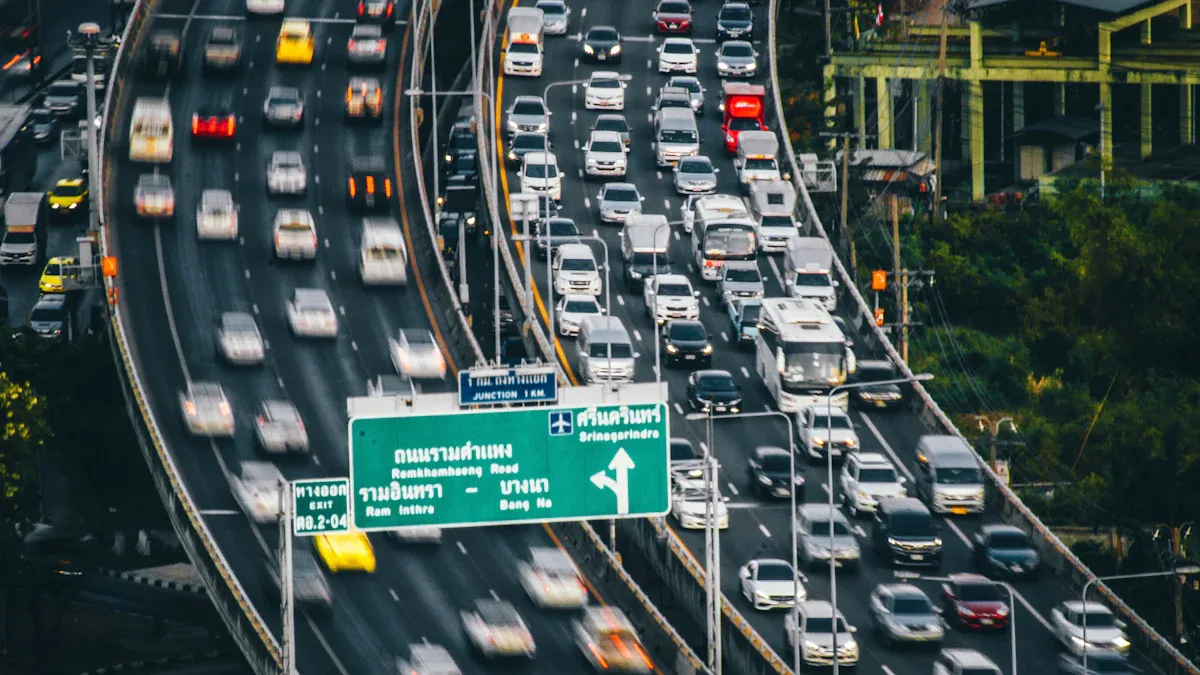
Plan Your Routes with Sobot Chatbot
Use Navigation Apps and Real-Time Traffic Updates
Planning your route with navigation apps can help you avoid peak hours. These tools provide real-time traffic updates, allowing you to choose less congested roads. For example, Cisco’s Smart City Traffic Management System uses AI to analyze millions of data points per second, helping drivers navigate urban traffic efficiently. Similarly, Hitachi’s AI-powered traffic signals adapt to real-time conditions, reducing congestion. Companies like Siemens and Kapsch TrafficCom have invested millions in intelligent traffic solutions, further improving road efficiency. By combining these technologies with tools like Sobot Chatbot, you can receive instant assistance during your commute, ensuring a smoother journey.
Leverage Sobot Chatbot for Customer Support During Travel
Sobot Chatbot offers a unique advantage for travelers. It operates 24/7, providing real-time support across multiple platforms like WhatsApp and SMS. Whether you need help finding alternative routes or managing customer interactions during peak hours, Sobot Chatbot ensures seamless communication. Its AI-driven features enhance efficiency, saving you time and reducing stress during busy periods.
Adjust Your Schedule
Leave Earlier or Later to Avoid Rush Hours
Adjusting your schedule can significantly reduce the impact of peak hours. Leaving earlier in the morning or later in the evening helps you avoid heavy traffic. Promoting alternative transportation modes like scooters or e-bikes also reduces congestion. Remote learning has shown to decrease school-related trips, improving travel times for other commuters. Studies reveal that scheduling improvements can double weekend ridership, as seen in June 2023 compared to June 2019.
Consider Flexible Work Hours or Remote Work
Flexible work hours or remote work options can help you bypass peak hours entirely. Many companies now allow employees to start earlier or later, spreading out traffic loads. Remote work eliminates the need for commuting, reducing road congestion and saving time. These adjustments not only improve your daily routine but also contribute to a more sustainable transportation system.
Use Public Transportation or Carpooling
Benefits of Reducing Vehicle Numbers
Using public transportation or carpooling reduces the number of vehicles on the road, easing congestion during peak hours. An increase of 120,805 carpooling trips during morning peaks can lower total trip demand by 2.55%. Out of 29,567 road links observed, 27,707 showed decreased or unchanged travel times, highlighting the positive impact of fewer vehicles.
Cost and Time Savings
Carpooling and public transportation offer significant cost and time savings. Fewer vehicles on the road lead to faster travel speeds, as seen in 20,504 road links where speeds increased or remained unchanged. Sharing rides also reduces fuel expenses and parking costs, making it a budget-friendly option. By choosing these alternatives, you can save money while contributing to smoother traffic flow during peak hours.
Leverage Technology for Smarter Travel
Traffic Monitoring Apps
Traffic monitoring apps have revolutionized how you navigate peak hour traffic. These apps provide real-time updates on road conditions, helping you avoid congested areas. For example, they alert you to accidents, construction zones, or sudden traffic jams. By using these tools, you can save time and reduce stress during your commute.
Many apps also support carpooling and public transit planning. Carpooling apps connect you with others traveling in the same direction, reducing the number of vehicles on the road. Public transit apps, on the other hand, offer accurate schedules and route suggestions, making it easier to plan your journey.
Here’s a quick overview of how these technologies benefit you:
| Feature | Benefit |
|---|---|
| Real-Time Traffic Alerts | Provide live updates and suggest quicker routes. |
| Carpooling Apps | Facilitate finding carpool buddies. |
| Public Transit Apps | Offer accurate schedules and route planning. |
| Adaptive Traffic Signals | Minimize stops by changing in real-time. |
| Smart Roads | Help manage traffic with live data. |
By leveraging these apps, you can make smarter travel decisions and enjoy a smoother commute.
Smart Vehicle Features and AI Tools
Smart vehicle features and AI tools are transforming the way you drive. Modern cars now come equipped with adaptive cruise control, lane-keeping assistance, and collision avoidance systems. These features enhance safety and reduce the risk of accidents during peak hours.
AI tools also play a significant role in optimizing your travel experience. For instance, AI-powered navigation systems analyze traffic patterns and suggest the fastest routes. Some vehicles even use AI to adjust their performance based on road conditions, improving fuel efficiency.
Sobot’s AI Chatbot complements these technologies by providing real-time assistance during your commute. Whether you need help finding alternative routes or managing customer interactions, the chatbot ensures seamless communication. Its 24/7 availability and multilingual support make it an invaluable tool for busy travelers.
By embracing smart vehicle features and AI tools, you can navigate peak hour traffic more efficiently while staying safe on the road.
Why Understanding Peak Hour Traffic Matters for Customer Service
Enhancing Customer Support During Peak Hours
Using Sobot Chatbot for Real-Time Assistance
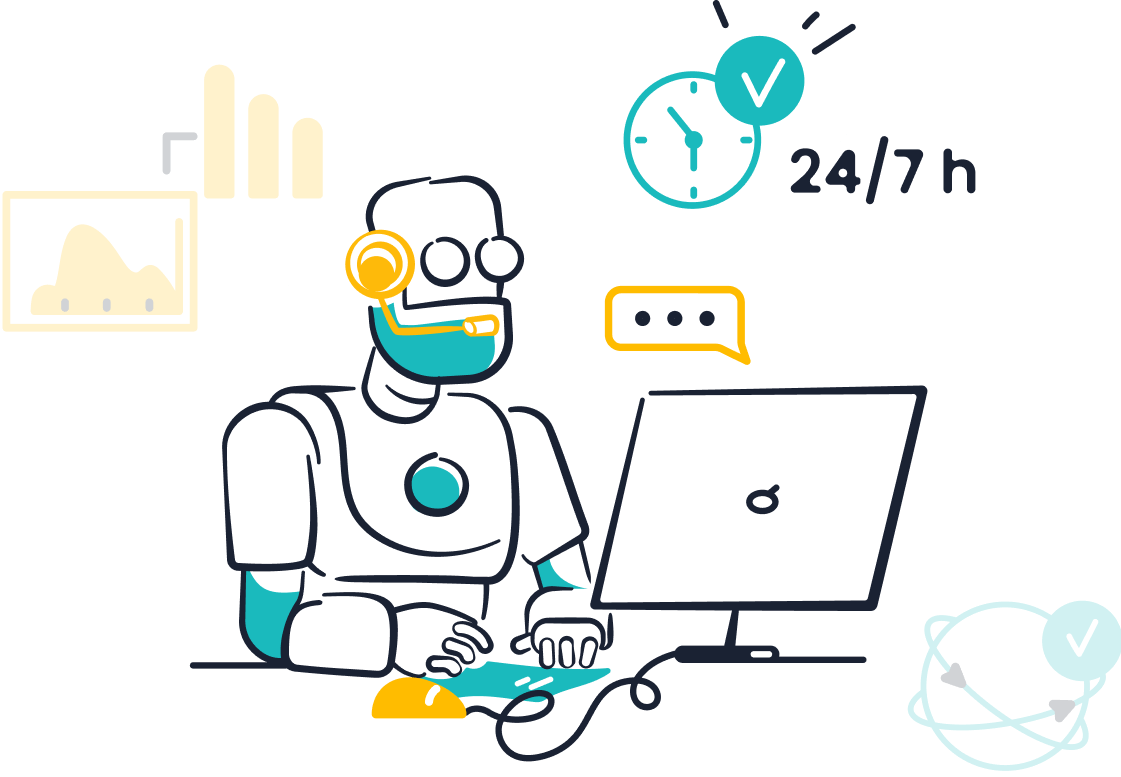
Peak hours often lead to increased customer inquiries, especially for businesses in retail, gaming, and financial services. During these busy times, delays in customer support can frustrate clients. Sobot’s AI Chatbot offers a solution by providing real-time assistance across multiple platforms like WhatsApp and SMS. It operates 24/7, ensuring that customers receive instant replies even during high-demand periods. For example, OPPO achieved an 83% chatbot resolution rate during peak shopping seasons, freeing human agents to handle complex issues. This efficiency improves response times and keeps customers satisfied, even when traffic volumes are at their highest.
Improving Customer Satisfaction with Efficient Solutions
Managing customer interactions effectively during peak hours enhances satisfaction. Sobot’s AI Chatbot uses smart self-service and proactive messaging to address common queries quickly. It reduces wait times and ensures seamless communication. Businesses like OPPO have seen a 94% positive feedback rate by leveraging Sobot’s solutions. By automating repetitive tasks, the chatbot allows human agents to focus on personalized support, creating a better overall experience for customers.
Contributing to Safer and More Efficient Roads
Encouraging Responsible Driving
Customer service tools can indirectly promote safer driving during peak hours. For instance, Sobot Chatbot helps drivers access real-time traffic updates and alternative routes, reducing stress and encouraging responsible behavior. When drivers feel supported, they are less likely to engage in aggressive driving, which is common during rush hours. This approach contributes to safer roads and a more positive commuting experience.
Reducing Traffic Accidents
Peak hours often see higher accident rates due to congestion and driver frustration. Tools like Sobot Chatbot can help mitigate these risks by providing timely information and support. For example, drivers can use the chatbot to find less crowded routes, reducing the likelihood of collisions. By integrating technology into daily commutes, businesses can play a role in improving road safety.
Supporting Environmental and Operational Goals
Lowering Carbon Emissions
Reducing congestion during peak hours benefits the environment. Fewer vehicles idling in traffic lead to lower carbon emissions. Sobot Chatbot supports this goal by promoting carpooling and public transportation through proactive messaging. Businesses that adopt these strategies contribute to a greener future while improving operational efficiency.
Promoting Sustainable Transportation Options
Sustainable transportation options, such as carpooling and public transit, reduce the number of vehicles on the road during peak hours. Sobot Chatbot can encourage these practices by providing real-time updates and route suggestions. For example, businesses can use the chatbot to share information about nearby carpooling opportunities or transit schedules. These efforts not only ease congestion but also align with environmental goals, creating a win-win scenario for companies and commuters.
Understanding the differences between peak and off-peak hours can transform how you approach daily travel. Peak hours bring heavy congestion, slower speeds, and higher stress, while off-peak hours offer smoother commutes and reduced risks. Managing peak hour challenges, like delays and safety concerns, requires effective planning. Strategies such as adjusting your schedule, using public transportation, or leveraging tools like Sobot Chatbot can make a significant difference. For example, Sobot Chatbot provides real-time assistance, helping you navigate traffic and manage tasks efficiently. By applying these tips, you can save time, reduce stress, and improve your overall commuting experience.
FAQ
What is the best time to avoid peak hour traffic?
You can avoid peak hour traffic by traveling during off-peak hours, such as mid-morning (10:00 AM to 3:00 PM) or late evening (after 7:00 PM). These times have fewer vehicles on the road, leading to faster travel and less stress.
How does peak hour traffic affect businesses?
Peak hour traffic can delay deliveries and increase call center traffic as customers seek updates. Businesses can use tools like Sobot’s AI Chatbot to handle inquiries efficiently, ensuring customer satisfaction even during busy periods.
Can public transportation reduce peak hour congestion?
Yes, public transportation reduces the number of vehicles on the road. For example, a single bus can replace up to 40 cars, easing congestion and lowering emissions. Carpooling offers similar benefits by sharing rides.
How can technology help manage peak hour traffic?
Technology like traffic monitoring apps and AI tools provides real-time updates, helping you avoid congested routes. Sobot’s AI Chatbot enhances this by offering instant assistance, making your commute smoother and more efficient.
What are the environmental benefits of reducing peak hour traffic?
Reducing peak hour traffic lowers fuel consumption and carbon emissions. For instance, fewer idling vehicles mean cleaner air. Businesses promoting carpooling or public transit contribute to a greener environment.
See Also
Enhance The Efficiency Of Your 24/7 Live Chat
Effective Management Strategies For Live Chat Agents
Essential Tips For Achieving Success In Depop Live Chat
